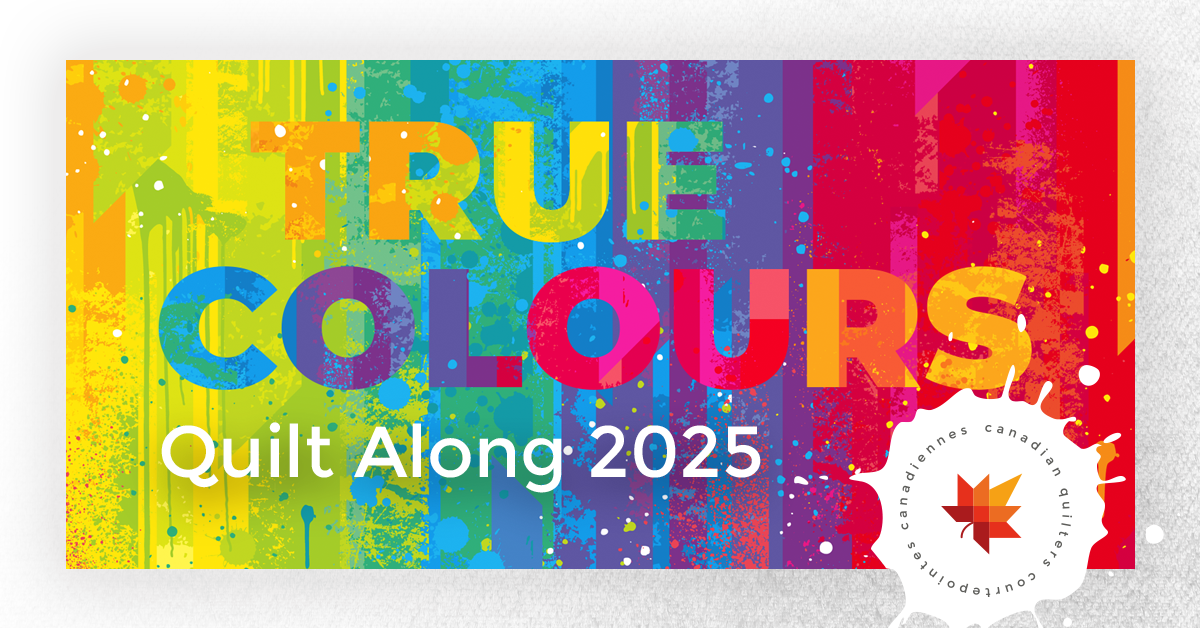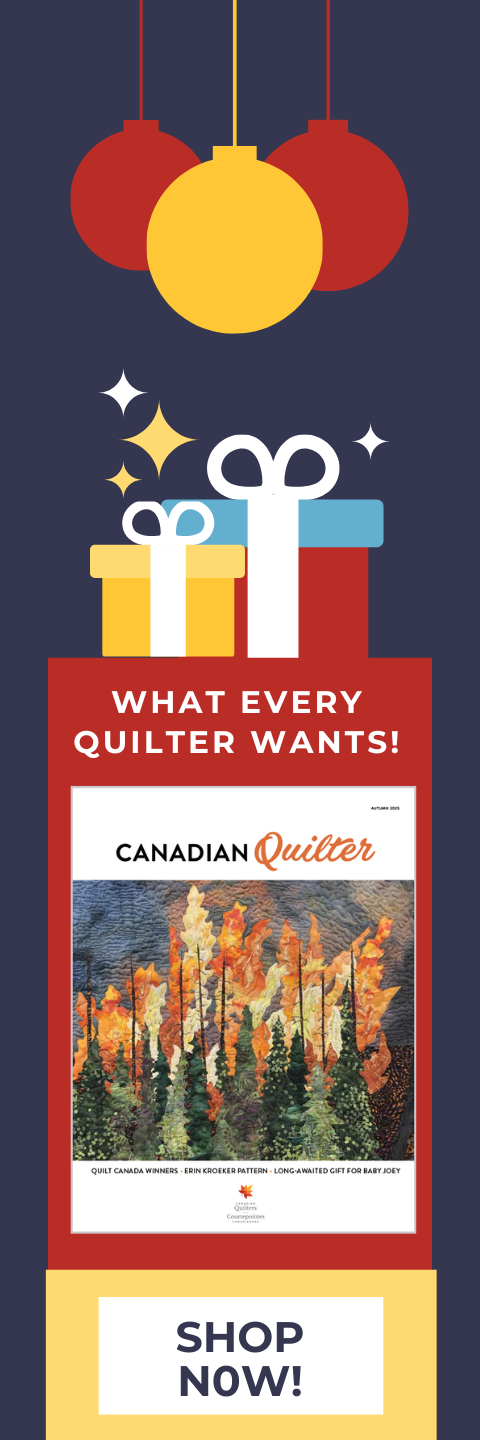As part of the True Colours Quilt Along 2025, CQA/ACC is collecting material for quilters who wish to learn more about the challenges faced by all marginalized people. We can all help to make welcoming and safe spaces for everyone with inclusive language. CQA/ACC invites you to suggest website links to add to our resources by emailing your ideas to membership@canadianquilter.com.
What is a pronoun?
Pronouns are substitutes for nouns in a sentence. Personal pronouns refer to a person or thing, and change according to gender. For example: “Susan is a modern quilter who uses geometrical shapes in her designs.”
We are familiar with female and male personal pronouns such as she/her/hers and he/him/his, and the neutral and plural pronouns they/them/theirs. These pronouns reflect a binary concept of gender, male and female.
If the gender of a person is unknown, we use gender-neutral language such as: “Chris is arriving at 7 pm, but they may be delayed.”
In the last 20-30 years, other gender-neutral pronouns have come into use for non-binary and transgender people. Some pronouns used in the trans community include ze/hir/hirs and ze/zir/zirs. Ze is pronounced “Zee”; hir is pronounced like “Here”; zir is pronounced “Zeer”.
What is the correct pronoun?
The correct pronoun is always the pronoun a person asks you to use when referring to them.
What if I’m not sure?
If someone you’re speaking with or about hasn’t indicated what their pronouns are, you can use gender-neutral pronouns (they/them), or use their name without substituting a pronoun.
If you make a mistake, simply apologize, correct the error, and move on.
We are better prepared to use the correct pronouns as we learn more and begin to understand that gender can be something other than binary (male and female).
Inclusive Language for Quilters
One of the ways to help everyone feel welcome in a guild meeting or workshop is to use inclusive language. It is helpful to never assume that the entire “audience” identifies as either male or female.
Neutral language is especially important in the quilting community where the audience has traditionally been female. It is common to hear a quilting group referred to as “ladies”, even when there are non-females in the room. It may be a force of habit, but we can change that once we raise awareness and make an effort to be more inclusive.
Here are some examples of how we can structure language to be more gender-neutral.
- Welcome, everyone, to today’s presentation.
- We have a new face/participant/quilter at the meeting today. Please be sure to say hello and answer any questions they may have.
- Folks, may I have your attention?
- I’m so glad to be with this amazing group of quilters
- Sandy would like to draw your attention to the use of thread colour in their quilting. If you have questions, please ask Sandy after the presentation.
We can all do our part to help ensure everyone feels comfortable and welcome in the quilting community. For some of us it’s a learning curve, and well worth the effort knowing that we are creating safe spaces for members, guests, and quilting-curious people who come to discover fabric arts, develop their skills, or share their fresh ideas and perspectives.
Resources:
A very helpful guide to using pronouns can be downloaded from egale.ca. The page regarding pronoun usage is here. From there you can download their Pronoun Usage Guide.
For a detailed list of terms used regarding gender and pronouns (and how to use them in a sentence), we recommend the Queer Dictionary published at queerevents.ca.
For more detailed examples of how to ensure that language is gender neutral, particularly in written communications, refer to an article called Gender-inclusive Language posted by the Canada System of Justice on the Government of Canada website.
If you have other resources that would be helpful to quilting groups when creating safe and welcoming spaces for everyone, please send your ideas to membership@canadianquilter.com, and we will add them to a resource list here.


